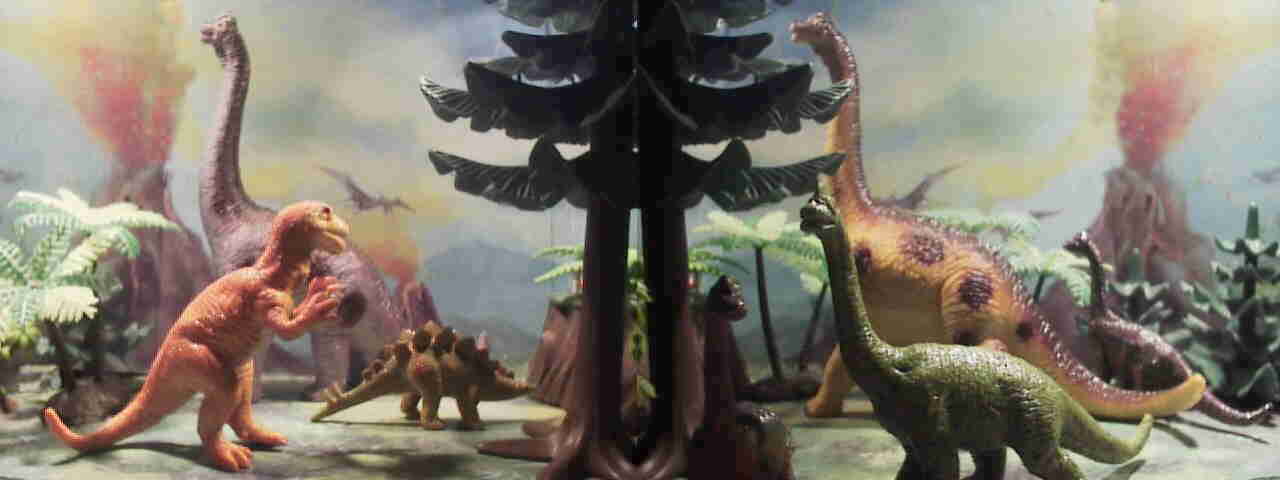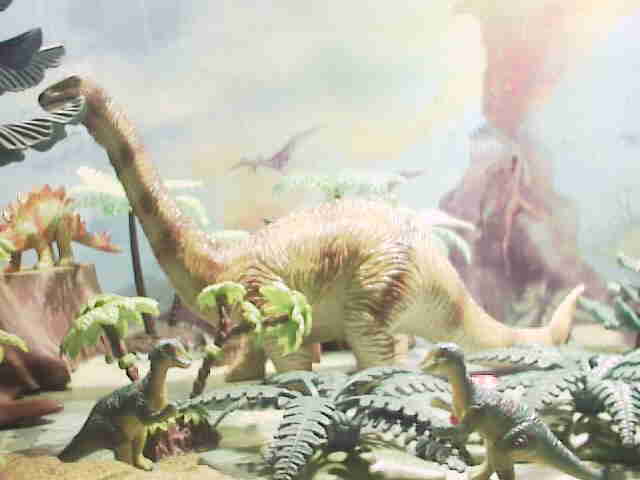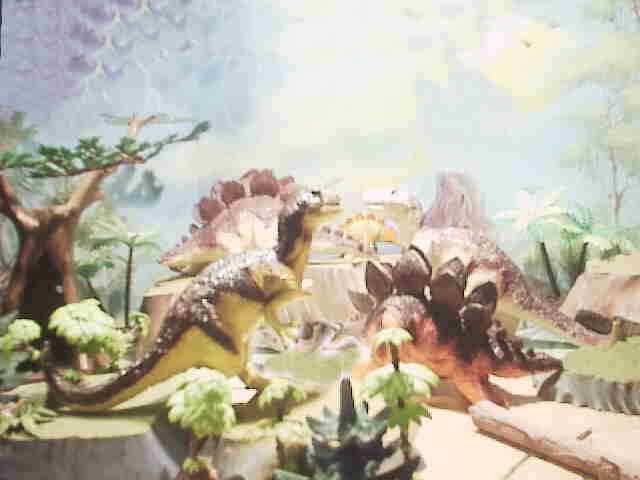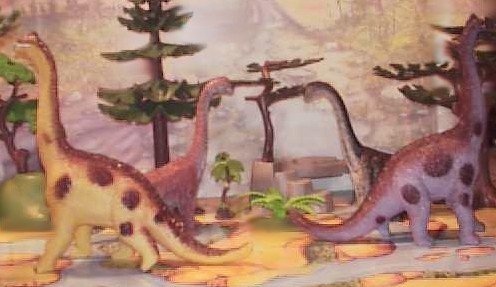Click on the Site A icon left for more diorama listed by location Click on the Site A icon to the right for Dioramas organized by period or by manufacturer.
The Late Jurassic from the Dinosaur Collector
Page 2 updated 121205
Jurassic Diorama Other Pages
Use the menus above to find Diorama of Jurassic fauna
The Jurassic period named from rocks formed at this time in the Jura Mountains of France and Switzerland marked the middle of the Mesozoic era. The earth's climate was generally warm and moist in the Jurassic and rains watered what has been Triassic deserts. The Late World fauna, except perhaps in Central Asia, if very similar. Giant Sauropods are the dominant herbivores, Stegosaurs are wide spread and Allosaurus is the most important carnivore. Small dryosaurus are wide spread but not abundant at large body dinosaur finds. Small theropods are rare in the fossil record.
UKRD produces at least 5 different sizes of solid rubber dinosaurs of mixed scales. The largest at about 12 inches are sold as the museum line and the smallest fit into gumball machines. You can mix and match from the sets to achieve a range of adults and adolescents of the same species. The Boley company marketed the 4-inch line as their museum line. The 3-inch line is sold as part of different diorama sets. The different sizes have similar but not always identical designs that make for a consistent assemblage.
| Brachiosaurus was a high browser. Allosaurus the most common but not the largest predator. There were several subspecies of Stegosaurus with Stegosaurus stenops being the largest and best known. |
 |
| The 2 largest brachiosaurs are from the 12-inch Museum line note the crest over the skull a distinctive UKRD style. The Allosaurus and green Brachiosaurus are from the Boley line. The Stegosaurus and Brachiosaurus to the right back are from the 1993 diorama group. |
| Camarasaurus is the most common sauropod from the Morrison. There evidence from track ways that adolescents traveled together in groups. | Apatosaurus was a large heavy diplodocid. One of the best known dinosaurs under its Junior synonym Brontosaurus. Dryosaurus were small plant eaters present around the world. Usually you don't find many small dinosaur fossils where you find the large fossils and the reverse is also true. One idea is Dryosaurus were more common in the uplands habitats that didn't attractant large plant eaters. | |
 |
 |
|
| This is the a blue Apatosaurus from the 1992 Boley set and the green Apatosaurus is from the 1993 diorama set. Originally Brontosaurus was an Apatosaurus with a Camarasaurus head. Although UKRD got the name change right they retained the boxy Camarasaurus style head instead of the triangular diplodocid head they used in 1991. Since you don't get many Camarasaurus figures these are a good representation for a diorama | The Apatosaurus is from the 1991 line, interestingly UKRD got the head correct in 1991. The pair of 2-inch Edmontosaurusfigures are just right size to represent the small Dryosaurus of the Late Jurassic. |




